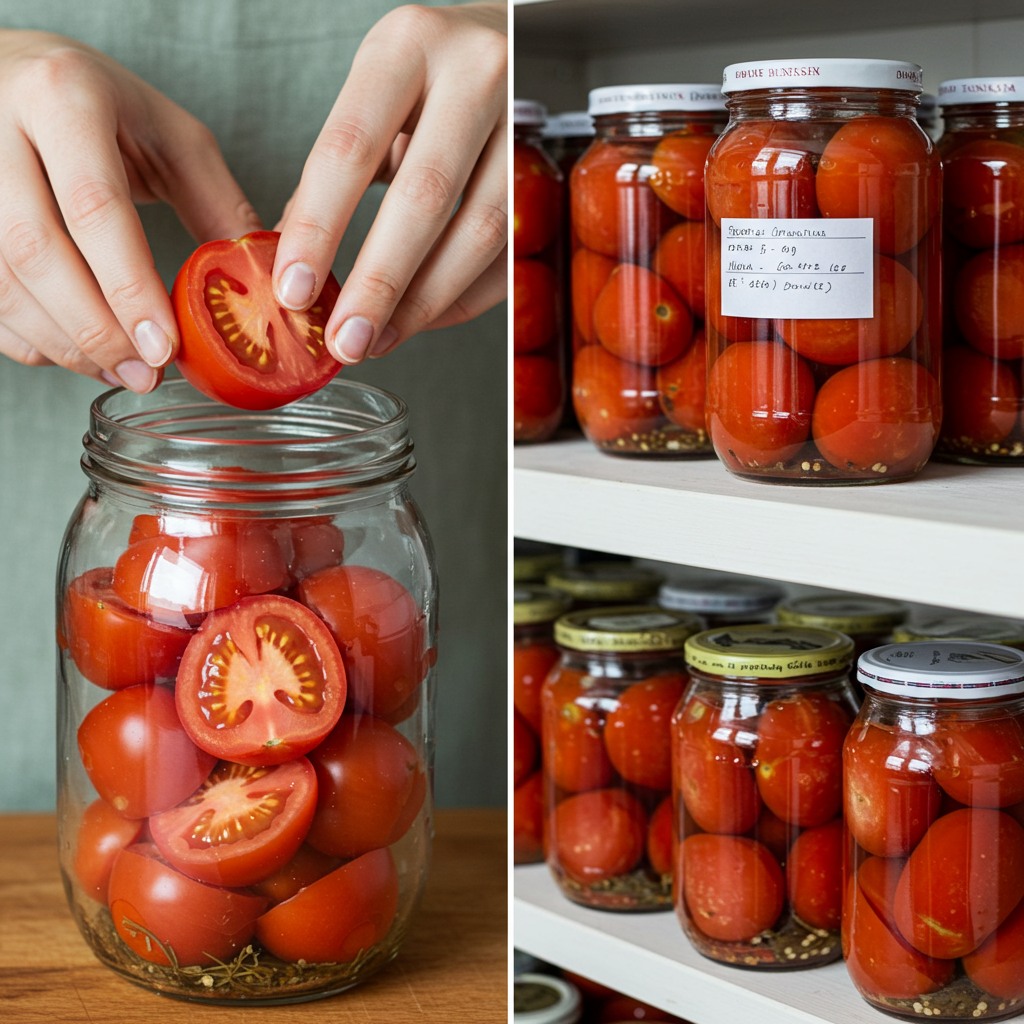ADVERTISEMENT
The most popular types of tomatoes for preservation include:
– **Roma Tomatoes**: These tomatoes are known for their dense, meaty flesh and low moisture content, making them perfect for preserving. Their consistency makes them ideal for freezing or drying.
– **Plum Tomatoes**: Similar to Roma, plum tomatoes have fewer seeds and are more compact, making them a great option for preserving.
– **Beefsteak Tomatoes**: If you prefer larger, juicier tomatoes, beefsteaks are a good choice. However, they may require more careful handling and processing due to their higher moisture content.
– **Heirloom Tomatoes**: For those who love the flavor of homegrown varieties, heirlooms are perfect. They have a rich flavor, although they can be a bit more delicate when it comes to preservation.
Always choose tomatoes that are fully ripe but not overripe. Overripe tomatoes may have a mushy texture, and they won’t hold up as well over time.
### **Step 2: Prepare Your Tomatoes**
Once you’ve selected your tomatoes, it’s time to prepare them for preservation. The method we will use in this article involves freezing, which is one of the easiest and most effective ways to preserve tomatoes for long-term storage.
1. **Wash and Clean the Tomatoes**: Gently wash the tomatoes under cold water to remove any dirt or pesticides. Be sure to dry them thoroughly using a clean kitchen towel.
2. **Peel the Tomatoes**: To ensure the best texture and flavor after freezing, it’s recommended to peel the tomatoes. To do this, make a small “X” incision at the bottom of each tomato. Bring a pot of water to a boil, then carefully drop the tomatoes into the water for about 30 seconds or until the skins begin to peel away easily. Once the skins are loosened, transfer the tomatoes to a bowl of ice water to halt the cooking process. Peel the tomatoes once they’re cool enough to handle.
**Tip**: If you prefer a more rustic texture and are okay with having some tomato skin, you can skip this step, but removing the skin helps preserve the texture of the tomatoes after freezing.
3. **Core the Tomatoes**: Use a small knife to remove the core of the tomatoes, as this part is tougher and doesn’t freeze as well. Cut the tomato in half to remove the core, ensuring you’re left with the meaty part of the tomato.
4. **Cut the Tomatoes**: Once peeled and cored, cut the tomatoes into quarters or eighths, depending on how large they are. You can leave the seeds in if you like, but it’s better to scoop out the seeds for a smoother texture after freezing.
### **Step 3: Blanch the Tomatoes**
Blanching is an optional step, but it can help preserve the flavor and texture of your tomatoes even further. Blanching helps stop the enzymes in the tomatoes from deteriorating during storage. This process helps maintain the color, texture, and flavor of the tomatoes, ensuring they taste fresh when you’re ready to use them.
To blanch the tomatoes, simply bring a pot of water to a boil. Place the cut tomatoes into the boiling water for about 30 seconds to 1 minute. You will notice that the skin starts to loosen and the tomatoes become slightly softened. After blanching, transfer the tomatoes immediately into a bowl of ice water to stop the cooking process. Drain them and set them aside.
For Complete Cooking STEPS Please Head On Over To Next Page Or Open button (>) and don’t forget to SHARE with your Facebook friends
